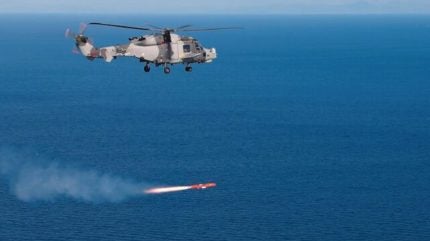
The UK Royal Navy has successfully completed the first guided live firing of MBDA-developed Sea Venom missile from the Leonardo’s AW159 Wildcat helicopter.
The move marks significant step in the Sea Venom missile integration process into the Royal Navy’s Wildcat helicopter.
UK MOD Defence Equipment & Support (DE&S) Helicopters head Nick Sargent said: “This firing marks a vital step forward in the integration of the Sea Venom missile into what is already an outstanding helicopter to provide the Royal Navy with a world-class capability.”
Conducted at the Ministry of Defence (MOD) Aberporth range in Wales, the trial demonstrates the advanced technological capabilities of the Sea Venom missile.
The live fire trial represents a collaborative effort between MOD and industry teams across the UK, involving a single firing at a single target.
Wildcat Maritime Force commander Ali Lang said: “The successful test firing demonstrates a significant increase in capability and lethality as the Wildcat helicopter remains ready to help defend our Queen Elizabeth-class aircraft carriers and their strike groups now and for years to come.”
The missile is designed to provide precision effects against a variety of threats, with the ability to operate effectively even in complex environments.
Its high-speed, two-way datalink allows operators to see the images captured by its infrared seeker, offering the option to control the missile throughout its flight.
This control capability introduces new potential actions, such as inflight re-targeting, final aim point correction, and safe abort, enhancing the missile’s flexibility and effectiveness.
Introduced into service in 2015, the Wildcat helicopters are now equipped with both Martlet and Sea Venom missiles to provide a formidable capability against various maritime and littoral targets.
The Sea Venom, with its coastal suppression ability, stands apart from legacy semi-active radar-guided missiles by employing an imaging infrared seeker that allows for ‘fire-and-forget’ operations.
Equipped with a 30kg-class warhead, the missile can reach targets up to approximately 20km away.
Its flight profiles, including the ability to skim the sea surface and the option for salvo firing, supports the Carrier Strike Group’s deployment predicted for 2025 and beyond.
Leonardo UK managing director Adam Clarke said: “This firing trial marks a pivotal moment in the FASGW programme as the Sea Venom is successfully fired from Leonardo’s AW159 Wildcat.”



